Eight Fun Things You Can Do That Will Make Your Trip to the La Brea Tar Pits More Memorable
The La Brea Tar Pits is one of my favorite places for a fun afternoon of learning. Not only did I go there when I was a kid, but also I’ve taken my kids there several times over the years. I mean, where else in the world can you see scientists digging for and cleaning Ice Age fossils in the middle of a huge city?
This is a place where asphalt (AKA tar) has been seeping to the Earth’s surface for tens of thousands of years. 10,000-40,000 years ago, prehistoric animals such as giant sloths, dire wolves, and mammoths got stuck in the sticky muck and died. Eventually, the stuck animals attracted other animals who would show up for an easy meal only to get stuck themselves.
The asphalt preserved their bones– lots of them. Today, the place that was formerly an asphalt mine provides the world with one of the biggest collection of Ice Age fossils. What’s more, it is all open to the public. In other words, regular people like you and me can go there to see the fossils and the scientists who work with them, and we can learn about what Los Angeles was like thousands of years before there were people here. That is pretty amazing.
If you want to learn more about how you can visit the La Brea Tar Pits yourself, go read my blog post about our most recent trip, How to See Fossils at the La Brea Tar Pits in Los Angeles. So, here is my list of eight fun things you can do the next time you go to the tar pits.
1. Explore Hancock Park
The La Brea Tar Pits are located in Hancock Park, a beautiful city park in the heart of Los Angeles’s Miracle Mile neighborhood. Admission to the park is free, while the museum has an admission fee.
While the George C. Page museum has a ton of cool things to see and do, Hancock Park itself has its own collection of sights that should not be missed.
Take a Selfie with an Ice Age Sculpture
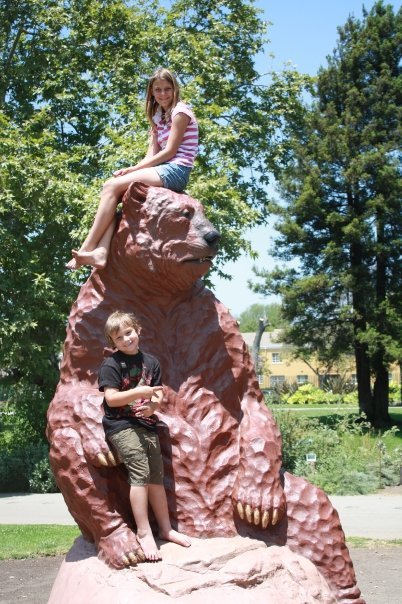
As you walk through Hancock Park, you’ll notice some really cool sculptures of Ice Age animals such as saber tooth cats, giant sloths, and mammoths. My older kids loved climbing on this sloth when they were younger.
See the Asphalt (Tar) Oozing out of the Ground
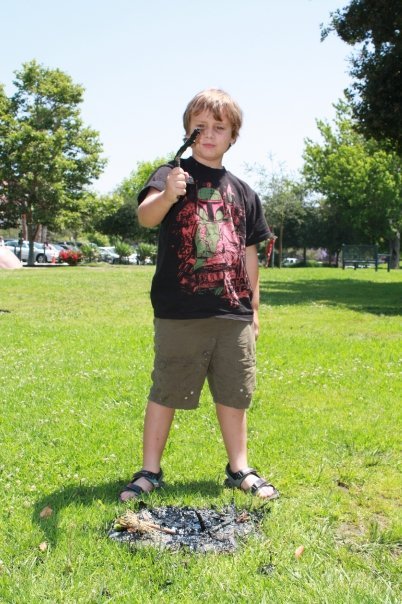
It’s everywhere! We even found it seeping up into the parking lot. It’s usually marked with cones so you don’t accidentally step in it, but not always.
Just be careful not to get it on your clothes. It won’t come out. Trust me on this.
Check out the Actual Tar Pits
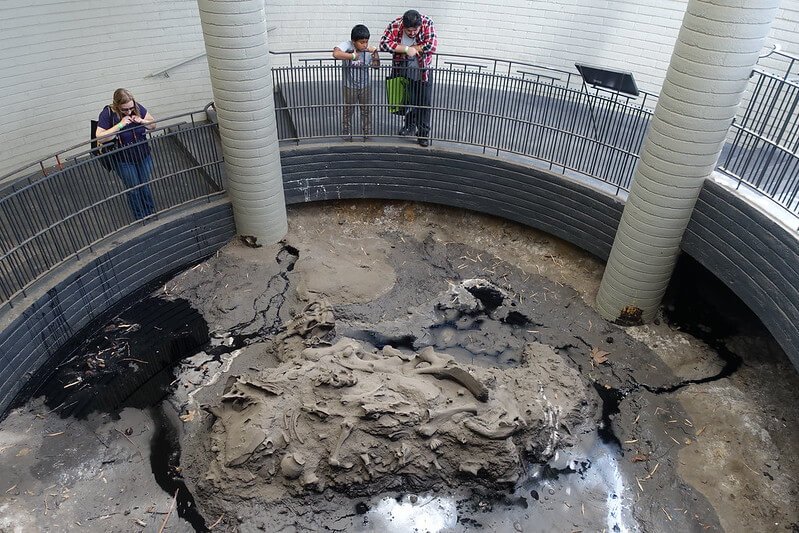
The Lake Pit in front of the Page Museum and several smaller pits are fenced off so nobody falls in. In the 1952 they built a building around Pit 101. The Observation Pit lets people see what the fossils look like before scientists pull them out of the ground.
2. See and Smell Prehistoric Plants in the Pleistocene Garden
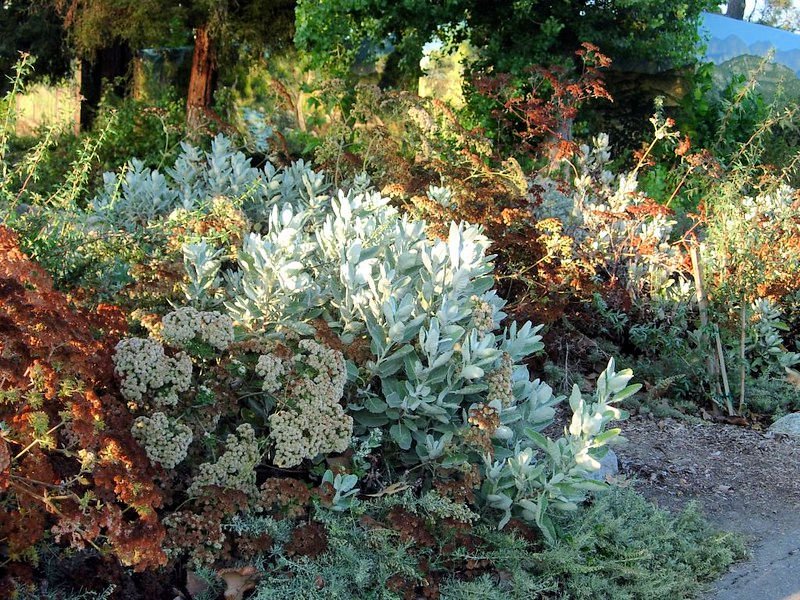
They actually recreated LA’s Ice Age landscape! Scientists studied the plants they found in the tar pits and planted their modern versions in Hancock Park. It’s not as dramatic as a mammoth skeleton, but it is definitely worth walking through while you’re exploring the park.
3. Watch the Excavators at Pit 91
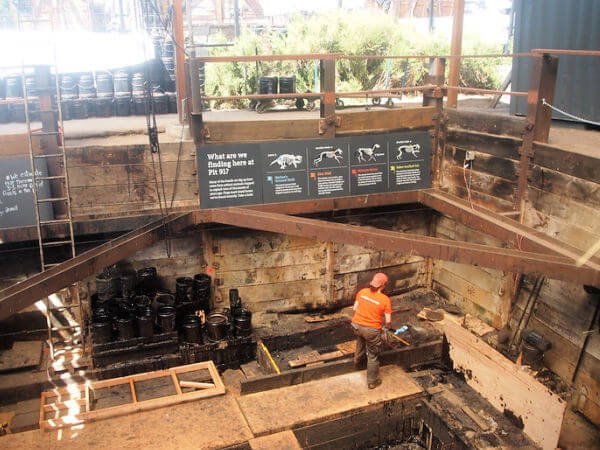
This is one of the coolest things at the La Brea Tar Pits. During the summer months, you can actually watch the excavators carefully digging the fossils out of the ground. My kids were fascinated, and so was I. The fossils are taken to the Fossil Lab inside the Page Museum for cleaning, etc. This is science in action, right in the middle of one of the biggest cities in the world!
4. Find Out What Was Under the LACMA Parking Lot at Project 23
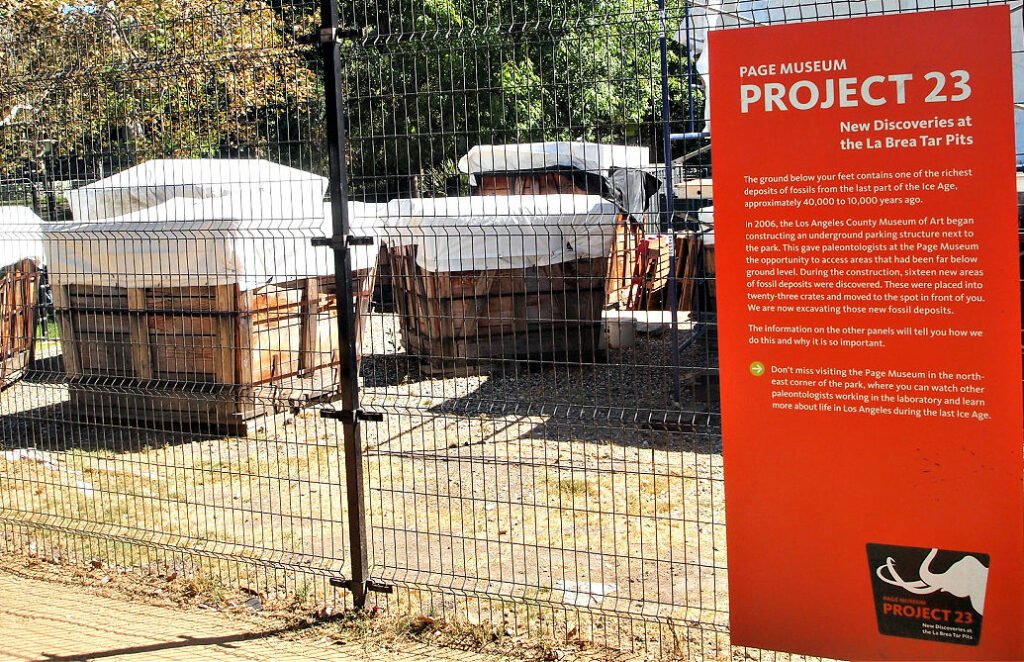
In 2006, the Los Angeles County Museum of Art (LACMA) started building a new underground parking structure. As workers were digging, they found not just one, but SIXTEEN fossil deposits.
Since it was not practical to stop construction for years and years while scientists sifted through the site like they do in Pit 91, they pulled out the dirt and fossils in large cubes that they put in large wooden crates. Once the fossil deposits were safely boxed up, construction was allowed to continue.
5. Discover Ice Age Animals at the George C. Page Museum
See Fossil Skeletons
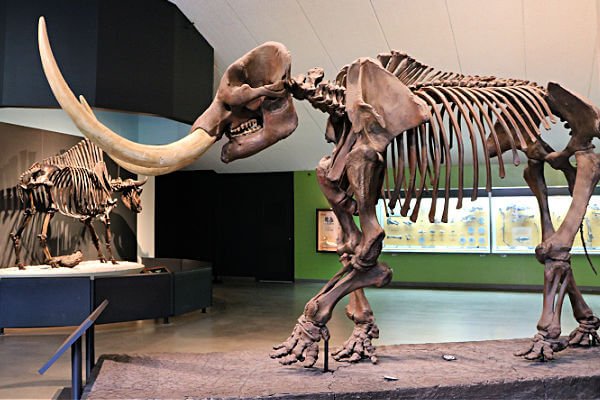
The skeletons you’ll see in the museum are actual fossils that were dug up in the La Brea Tar Pits. The skeletons are a bronzy-brownish color because the tar stained the bones. How cool is that?!?
Marvel at the Full Scale Models

There are several full scale models of Ice Age animals you can see throughout the Page Museum. You can see giant sloths, saber tooth cats, mammoth, and mastadons, just to name a few. It really gives you an idea of how big some of these animals were. Daniel looks so small standing next to this Ice Age bear, doesn’t he?
Learn All About Ice Age Animals and How They Lived

They have some great displays that show you about the animals so you can learn about them. This one shows how extinct relatives of the elephant evolved.
6. Watch a 3D Movie
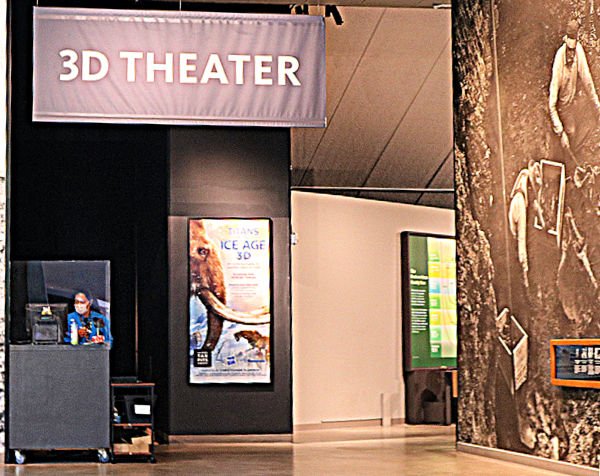
7. See Scientists at Work at the Fossil Lab
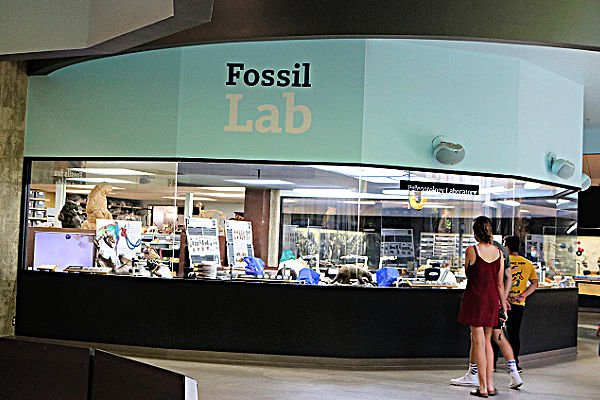
The Fossil Lab is affectionately known at The Fishbowl, because the scientists do their work in front of a semicircle of windows. This is one of the few places where regular people can see scientists working up close.
Find Out Who Zed the Mammoth Is (Was?)
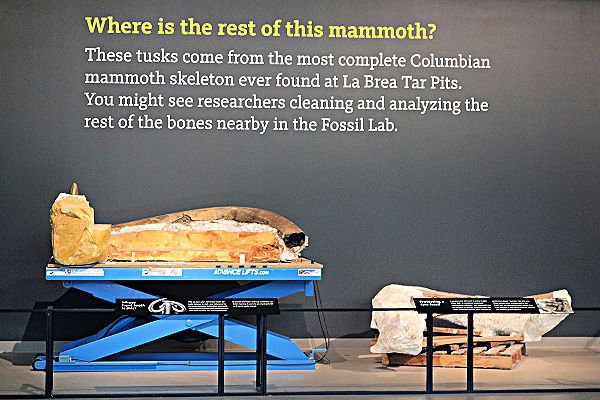
When LACMA started digging the site of their new parking structure, they found lots of fossils–you can see what they found outside at Project 23. One of the things they found was an almost complete Columbian mammoth skeleton, who they named Zed. You can see them cleaning Zed in the Fossil Lab. His huge tusks are on display inside the Page Museum.
8. Play with the Interactive Displays
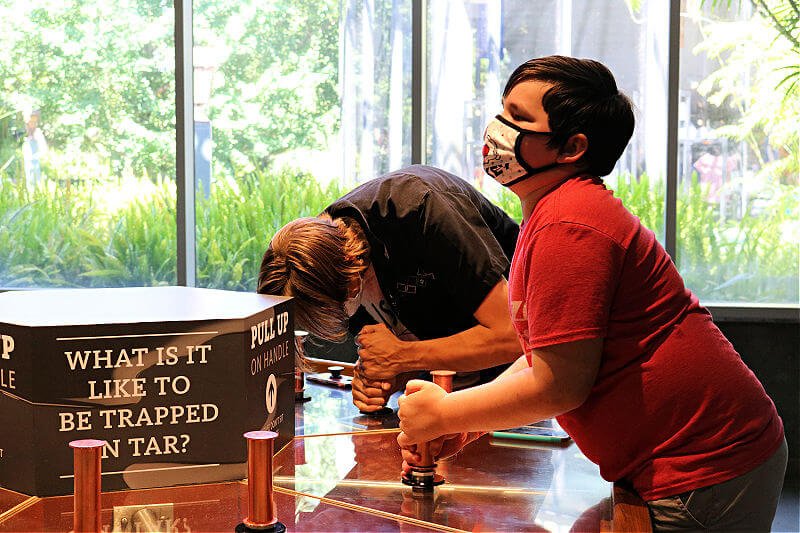
The Page Museum has some great interactive displays that teach kids (and grown up kids) what life was like in the Ice Age. My kids loved trying to pull animal “feet” out of the tar, making a mastodon tusk grow, and having mammoth tusk fights.

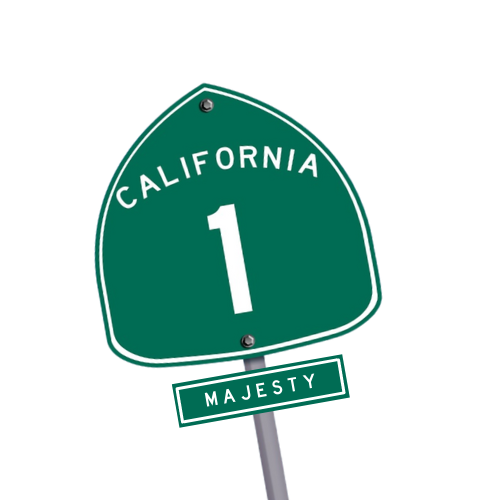
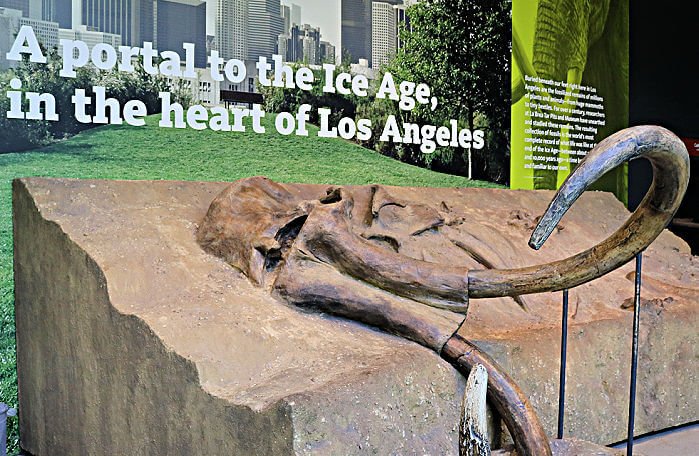
I agree!
Thanks for the great article!
Thx